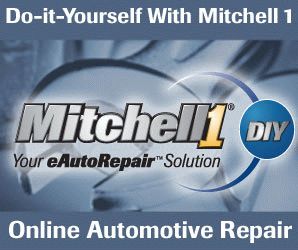The Basics of Performance Upgrades
It’s every guys dream to have his car, truck or SUV go faster than the next. The problem is, there are no real good roadmaps for every car, and a lot of money can be wasted chasing a few extra horsepower.
Let’s look at a few common upgrades that can gain you some horsepower and earn you some respect on the road. The first upgrade that can make the most difference and make your car sound awesome is the exhaust system. Many aftermarket manufacturers are producing bolt-on exhaust systems, which can help free up 5 – 20 HP depending on how restrictive your factory exhaust is. Most systems replace the pipes and mufflers from the catalytic converter back. These are commonly called Cat-Back Systems and can be had for a price of $250 – $750 depending on materials used. Stainless steel pipes will cost you more, but will last a lot longer than plain steel. If you plan on keeping your car more than 50,000 miles or live in a state that uses salt on the roads during the winter, I would suggest stainless steel. I personally like the sound of Flowmaster Mufflers as well as Borla… your taste may vary.
The next most common way to free up some horsepower is a performance air filter. By helping your engine breath better, the air filter will help you get more air and fuel into the cylinder and thus make more power. Be aware that most aftermarket filters will require some kind of cleaning and maintenance to work properly. K&N is my favorite brand and has been around the scene for a long time.
Related to the air cleaner, a cold air intake relocates the air filter so your engine is breathing cool outside air instead of hot under hood air. Not all cars can benefit from this modification, as it’s sometimes hard to get the air filter in a position to scoop up that cooler outside air. Check at your local parts store to see if they have a cold air intake for your specific vehicle.
Your car came from the factory built for long life and easy maintenance. The engineers at the factory have programmed your engine computer to err on the safe side at the sacrifice of more power. Aftermarket companies now produce computer chips, which will alter your engine computer and help it run at peak efficiency. For a little more than $150 you can pick up 10 – 30 HP by just changing your engine computer chip. Not bad for about an hours worth of work.
The old saying, nothing beats cubic inches is still true today, but unfortunately the new cars available today no longer come with 426 Hemi engines under the hood. Most of today’s cars do not have the room for bigger engines, so what is a car guy to do? Turbo charging or super charging is the answer for today’s cubic inch challenged engines.
Normally aspirated engines use outside air to fill the combustion chamber. To maintain the proper air/fuel ratio to support combustion, the engine can only burn so much fuel dictated by the size of the cylinders. This is why a larger displacement engine can produce more power, since the cylinders are larger, they can burn more fuel. In a turbo or super charged engine, the air coming into the cylinder is compressed and thus contains more oxygen, therefore requiring more fuel to completely burn. This gives you an increase in power, without adding more size to the cylinders. If you can cram twice the air and fuel into the same cylinder, you have just doubled the displacement and power of your engine.
This is a very simple overview of how a turbo charger or supercharger works, and there are some downsides to both systems, but you can now see why this method of making horsepower is used commonly on today’s street machines. If you are interested in adding a turbo or super charger to your vehicle, check around and see what kits are readily available for your vehicle. Start at your local parts store, or on the Internet to do your research. It won’t come cheap, but you can add 50 – 150 HP in about a weekend’s time and have the fastest car on the block.
 Before you click out! While I know a lot about cars, I don't know a lot about YOUR CAR! A repair manual is essential and I have a way for you to get one FREE.
Before you click out! While I know a lot about cars, I don't know a lot about YOUR CAR! A repair manual is essential and I have a way for you to get one FREE. Learn more with our Autoshop101 courses.
Posted: 13th June 2006 | Author: Kevin Schappell | Category: Engine, Exhaust
